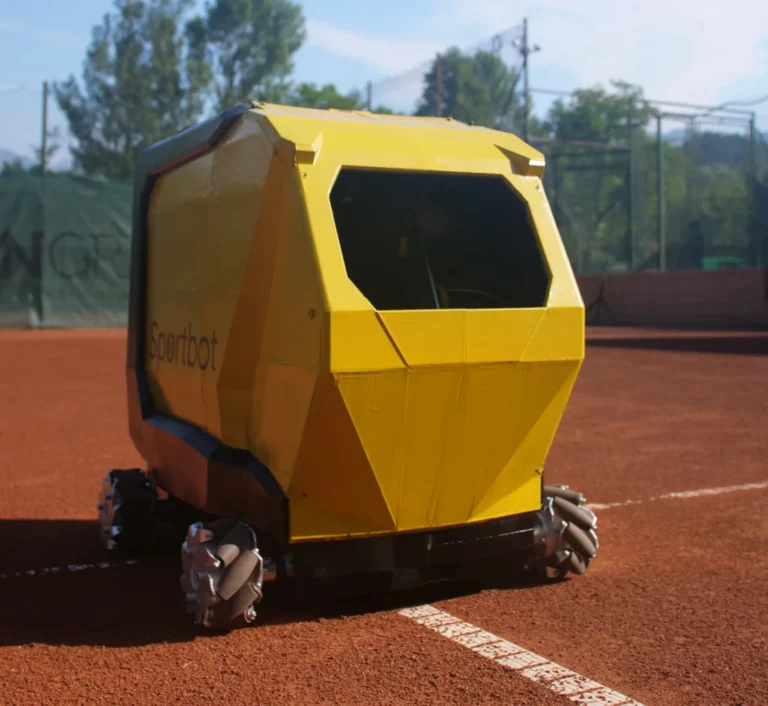How does a tennis ball launcher machine work?
A deep dive into how tech improves your tennis.
“Staying ahead means understanding your tools.”
Table of contents:
Every tennis player and coach knows that practice makes perfect. But not everyone has a practice partner available all the time. That’s where the tennis ball launchers comes in handy. But how do these gadgets actually work?
In this post, you’ll learn how tennis ball machines are designed, so next time you’re on the court, you’ll know how to use your trusty machine more effectively.
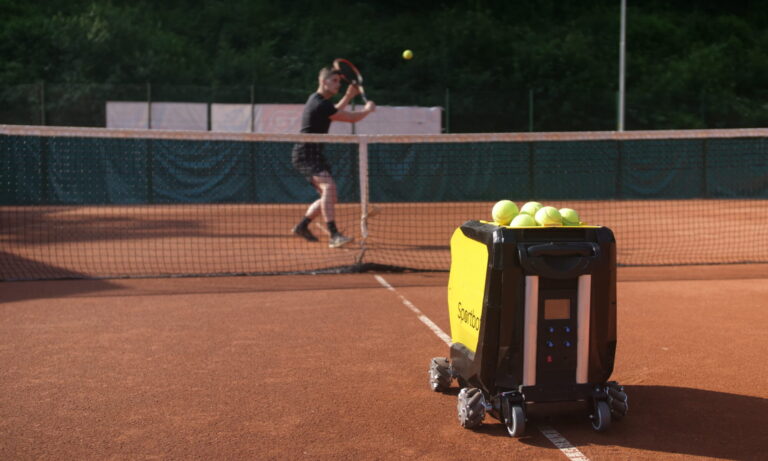
The Basics: What is a Tennis Ball Launcher?
A tennis ball launcher is a device designed to automatically launch tennis balls, allowing players to practice their shots without the need for a human opponent or partner. Its primary goal is to provide consistent and repetitive shots, enabling players to focus on specific aspects of their game, be it their forehand, backhand, volley, footwork or stamina.
At its core, the launcher consists of a mechanism to shoot the balls, a feeding system to load the balls, and a control panel or remote to adjust settings such as speed, spin, and trajectory. These machines come in various sizes and complexities, from basic models for beginners to advanced systems used by professionals.
Beyond individual practice, coaches often use these machines in training sessions, allowing them to observe and correct players’ techniques without being occupied with feeding balls. The continuous supply of balls also ensures an efficient, high-intensity workout, making the most of the time spent on the court.
Anatomy of a Tennis Launcher: Key Components and Their Functions
For every tennis enthusiast, understanding the anatomy of a tennis ball machine is essential, as such knowledge can help optimize your training sessions. Here’s a breakdown:
Container: Often the most visible part, this is where you load the tennis balls. Think of it as the magazine of this tennis ball machine gun, gearing up to release rapid shots for your practice.
Ball launcher: This mechanism is crucial for the launcher. It typically houses two counter-rotating wheels. When a tennis ball finds its way between these wheels, it’s propelled out, ready for the player’s next shot.
Launcher motors: The powerhouse behind those spinning wheels. By tweaking the motor’s speed, players can get that desired tennis ball machine speed and rotation for their shots, be it slow arcs or speedy serves.
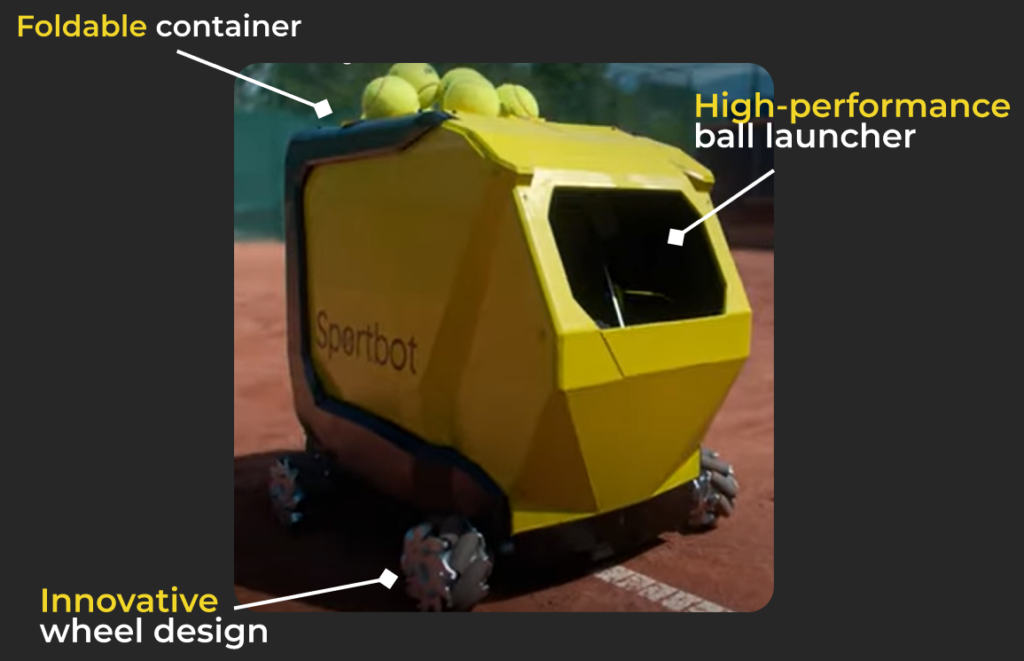
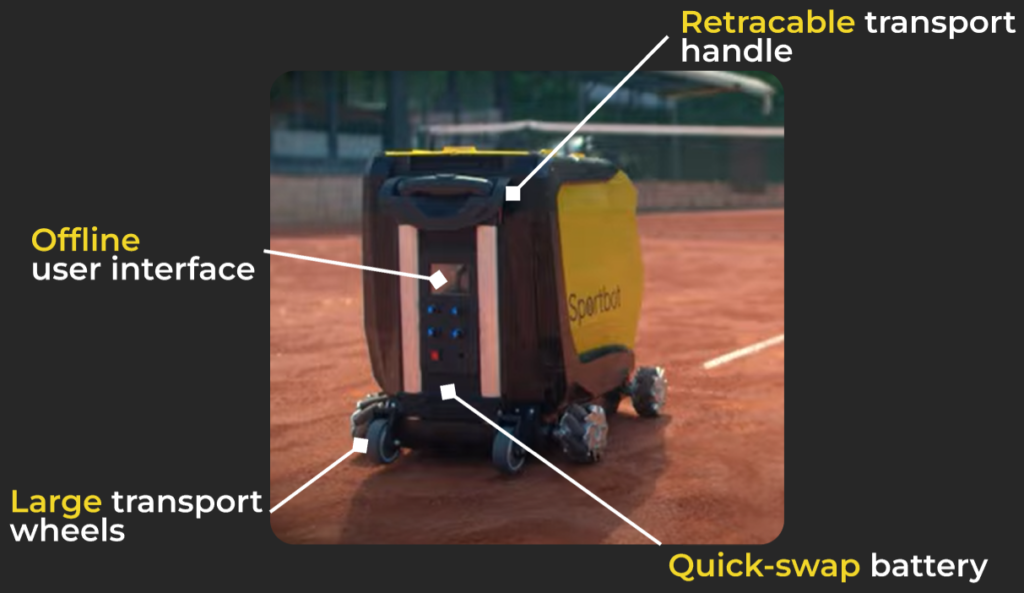
Oscillation system: This system adjusts the machine’s shot direction, allowing players to not only handle straightforward returns but also master those tricky angled ones, essential for a dynamic tennis ball machine workout.
User interface: Here, you decide the speed, shot frequency, and oscillation range. Some sophisticated models might even offer mobile apps to control the machine, giving players and coaches full control over their sessions.
Power Source: Most machines use a battery, making them portable companions on any tennis court. Yet, some might come with power cords, catering to those who prefer a stationary setup and have access to a nearby power outlet.
Types of Launch Mechanisms: Rotational vs. Pneumatic
Two tennis ball launcher mechanisms currently dominate the market: rotational and pneumatic. Learning about both can guide you in making an informed decision tailored to your training goals.
Rotational launchers can be seen in the figure below, and operate using two spinning wheels. As a tennis ball slides between these wheels, it’s quickly launched due to friction, replicating different shots one might encounter during a game.
One of the standout features of rotational launchers is the ability to customize practices. Players and coaches can adjust ball speed and rotation, offering a tailored practice experience. They’re also compact and light-weight, fitting snugly in various court settings.
However, these launchers come with a caveat—they can produce more noise and require regular attention, especially concerning the wheels.
On the other hand, Pneumatic launchers work by harnessing the force of compressed air. When activated, air propels the ball from a chamber, challenging the player’s skills.
What sets pneumatic launchers apart is their quieter operation, making them a favorite among players who prefer a less noisy environment. They consistently deliver balls at set speeds, and with fewer components, maintenance tends to be on the lower side.
But there are some considerations: they do not offer the same level of speed and spin adjustability as their rotational peers. Plus, the presence of an integral air compressor can make them much bulkier.
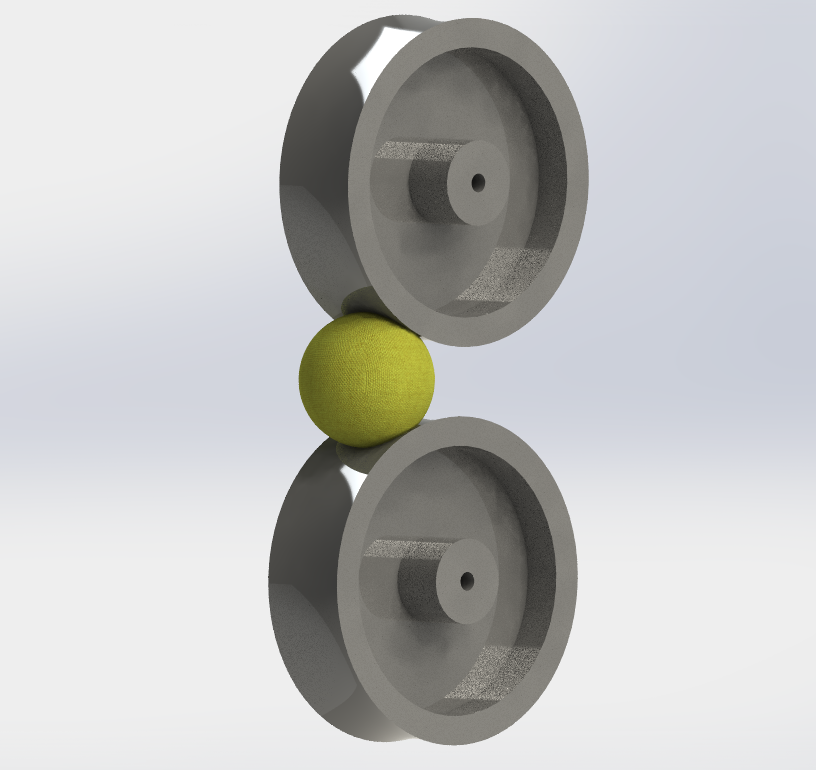
Understanding the Settings: Speed, Rotation, Height and Frequency
Speed: New to tennis? Start with a gentle pace. Seasoned player? Crank it up to match high-speed strokes or returns. Perfect for honing reactions to both swift and leisurely shots.
Rotation: Here, players can mimic different spins they’d encounter during matches. Adjust it to practice against those tricky slices or challenging top-spin balls. It’s like having an opponent who loves to mix up their shots.
Height: The height adjusts the bounce. Go low for those challenging slices that barely rise off the ground or set it high to simulate lobs. It’s ideal for preparing yourself for a variety of returns you’ll see in games.
Frequency: Adjusting the time between shots means you can either challenge your reflexes with rapid-fire balls or take longer to focus on technique. It’s all about setting the rhythm of the game.
And here’s the ace up your sleeve: the Sportbot’s movement feature. Unlike regular launchers, this one moves around. So you aren’t just hitting back balls—you’re predicting, moving, and strategizing just like in a real match against a real opponent.
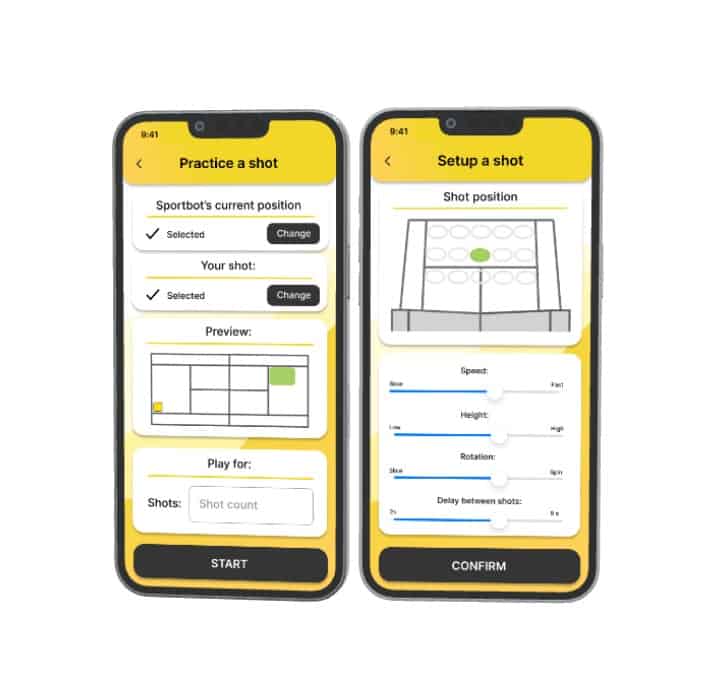
Maintenance and Care: Ensuring Longevity of Your Launcher
Caring for your tennis ball launcher is crucial to ensure it functions optimally and lasts a long time.
Regular cleaning is the cornerstone of maintenance. Wiping down the exterior of the machine with a soft, damp cloth helps to remove dust, dirt, and ball fuzz, preventing unwanted build-ups. It’s also essential to periodically inspect the ball feeding system. Any signs of wear or obstructions can hinder the smooth delivery of balls, so addressing these early can prevent larger issues.
For those using battery-operated launchers, battery care shouldn’t be overlooked. Ensure the battery is consistently charged after use and avoid overcharging to prolong its life.
One of the standout features of the Sportbot is its drive wheels. After each training session, it’s a good practice to inspect these drive wheels for debris or foreign objects. Cleaning them gently with a brush or cloth ensures they function smoothly, giving the Sportbot its unparalleled mobility on the court. Additionally, checking the wheel alignment occasionally can prevent uneven wear and tear.
Lastly, storing the machine in a cool, dry place, shielded from direct sunlight or harsh temperatures, can make a significant difference in its longevity.
Safety Precautions: Tips for Safe Usage
Tennis ball launchers are invaluable tools for practice, but their use comes with responsibilities. Ensuring safety is paramount for both players and coaches. Here are some essential guidelines for a secure training environment:
Clear the Area: Before starting the machine, ensure that the court and surrounding areas are free from stray balls, equipment, or other obstacles. This reduces the risk of trips, falls, or mishaps.
Orientation Matters: Always point the launcher away from people when turning it on. The initial launch might be unpredictable, especially if settings were changed in the last session.
Stay Alert: During drills, players should remain attentive to the machine’s actions. This is especially true for models like the Sportbot, which moves across the court. Knowing its position helps in anticipating ball directions.
Child Supervision: If kids are around, ensure they understand the machine’s workings. It’s crucial they’re supervised at all times, so they don’t approach the launcher unexpectedly.
Emergency Stop: Familiarize yourself with the machine’s emergency stop function. Being able to halt operations instantly can prevent potential accidents.
Battery Care: If the machine is battery-operated, never leave the charging unit unattended for extended periods. Overcharging can cause overheating or, in rare instances, a fire.
Regular Inspection: Before each use, give the machine a quick once-over. Check for any visible damage, loose parts, or irregularities. A minor issue can escalate if left unaddressed.
Stay Updated: If you’re using advanced models like the Sportbot, stay informed about software updates or manufacturer’s advisories. These updates might include safety enhancements.
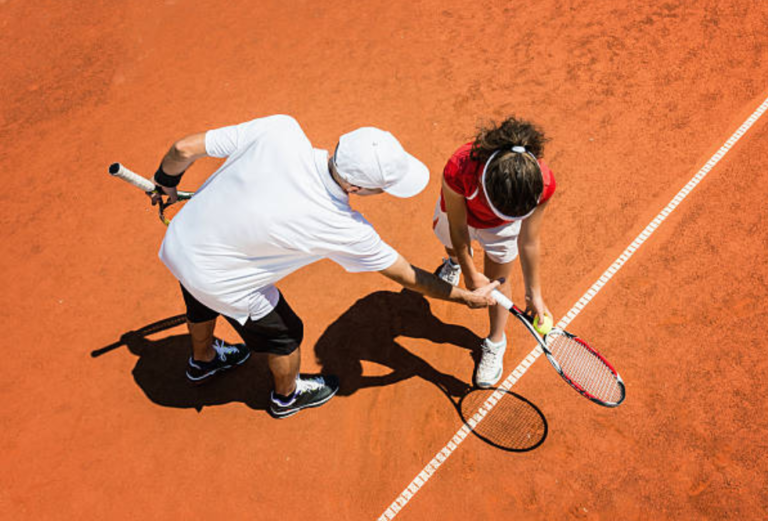
Summary
Tennis ball launchers, like the innovative Sportbot, are game-changers for players aiming to improve their skills. These machines offer a precise and consistent way to practice shots, and real-match scenarios with various settings catering to players’ unique needs.
You’ve learned about the anatomy of these launchers, highlighting key components that make them function seamlessly.
You’ve explored different launch mechanisms, with rotational and pneumatic mechanisms being predominant. The settings of a launcher, including speed, rotation, height and frequency, allow for tailored practice sessions. Unique to the Sportbot is its ability to move on the court, offering players a dynamic, real-match simulation.
Maintenance is essential for the longevity of these machines, with special attention needed for Sportbot’s drive wheels.
Lastly, safety remains paramount; ensuring a clear area, being alert, and regular inspections can ensure a risk-free experience. As tennis technology evolves, understanding and safely utilizing these tools can elevate one’s game to new heights.
Want to read some more?
Or looking for a tennis ball machine?
